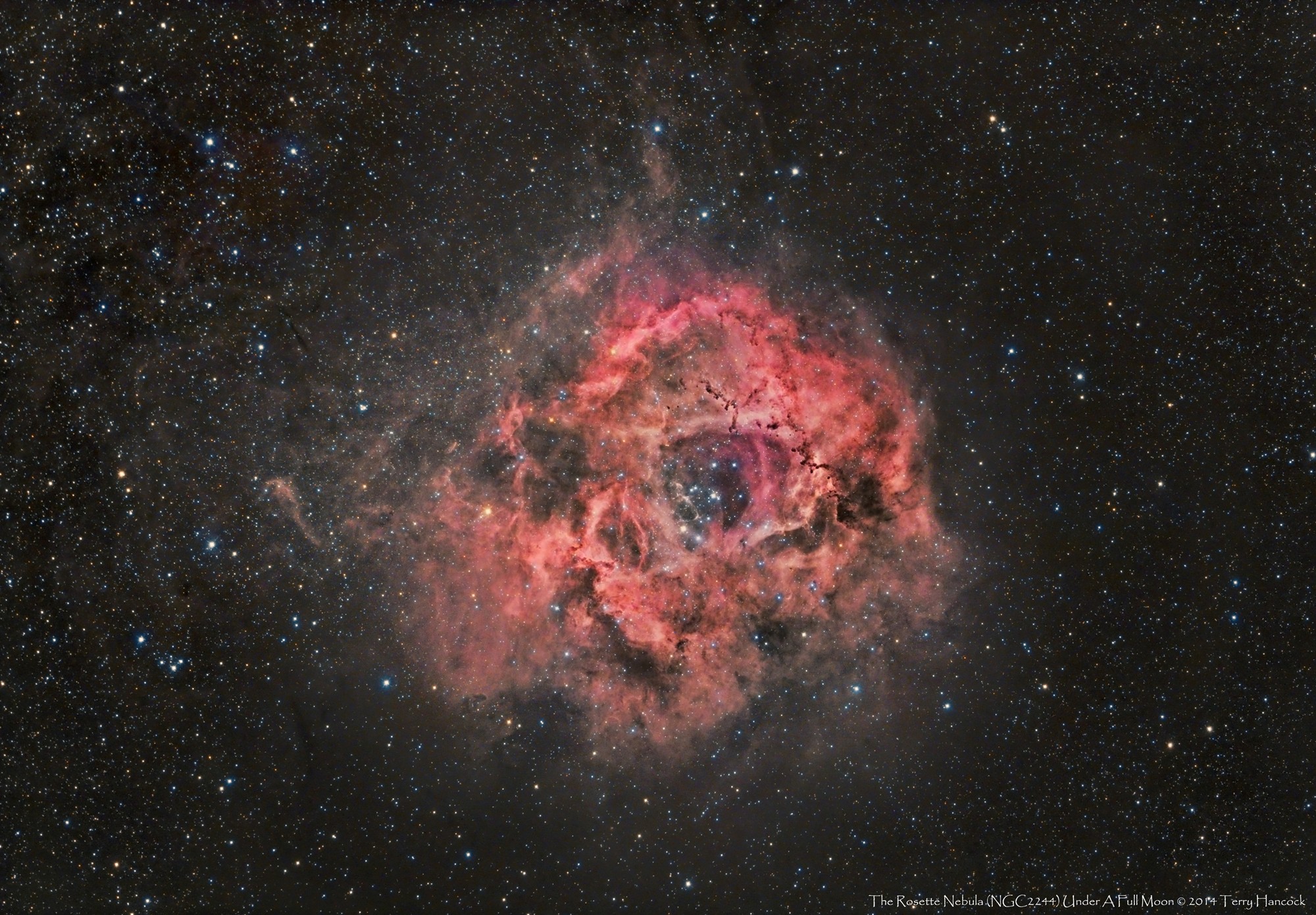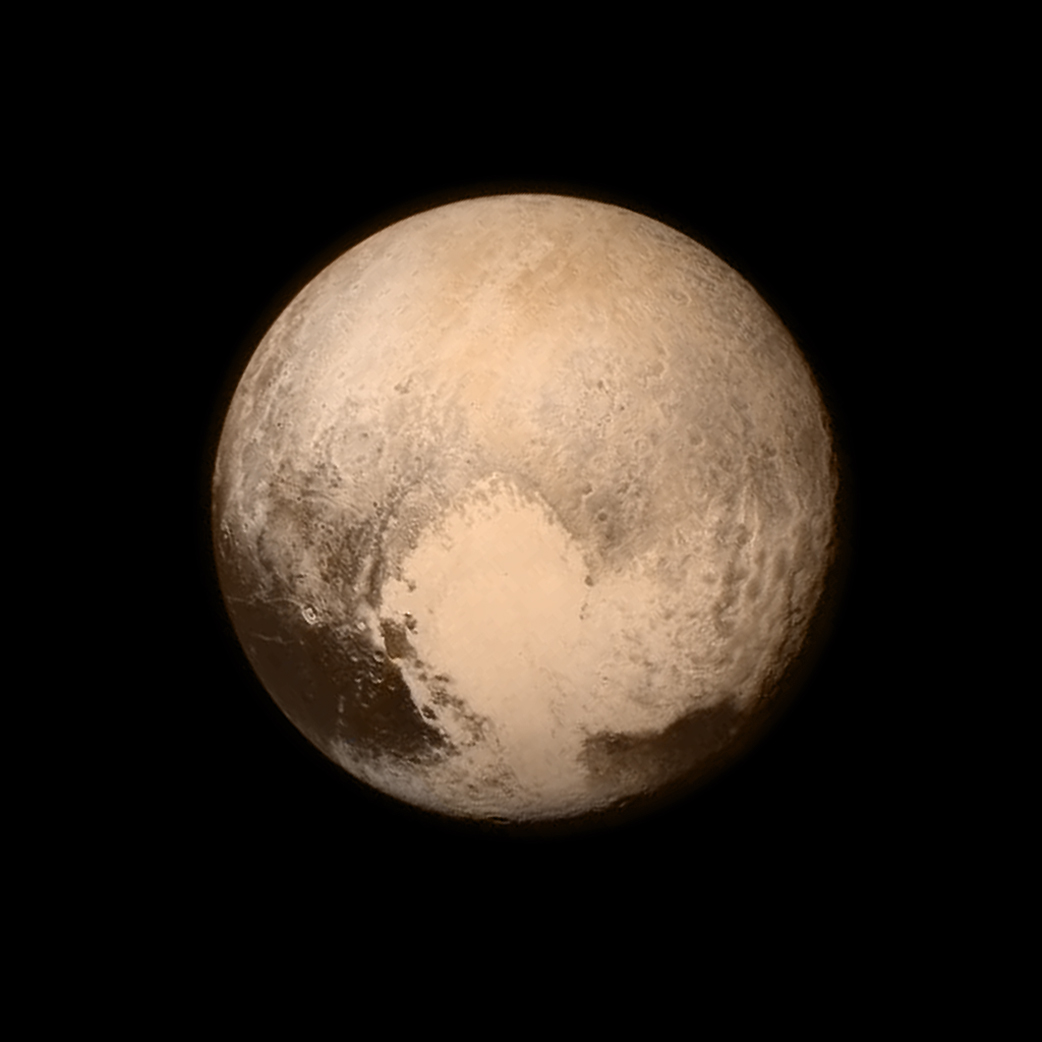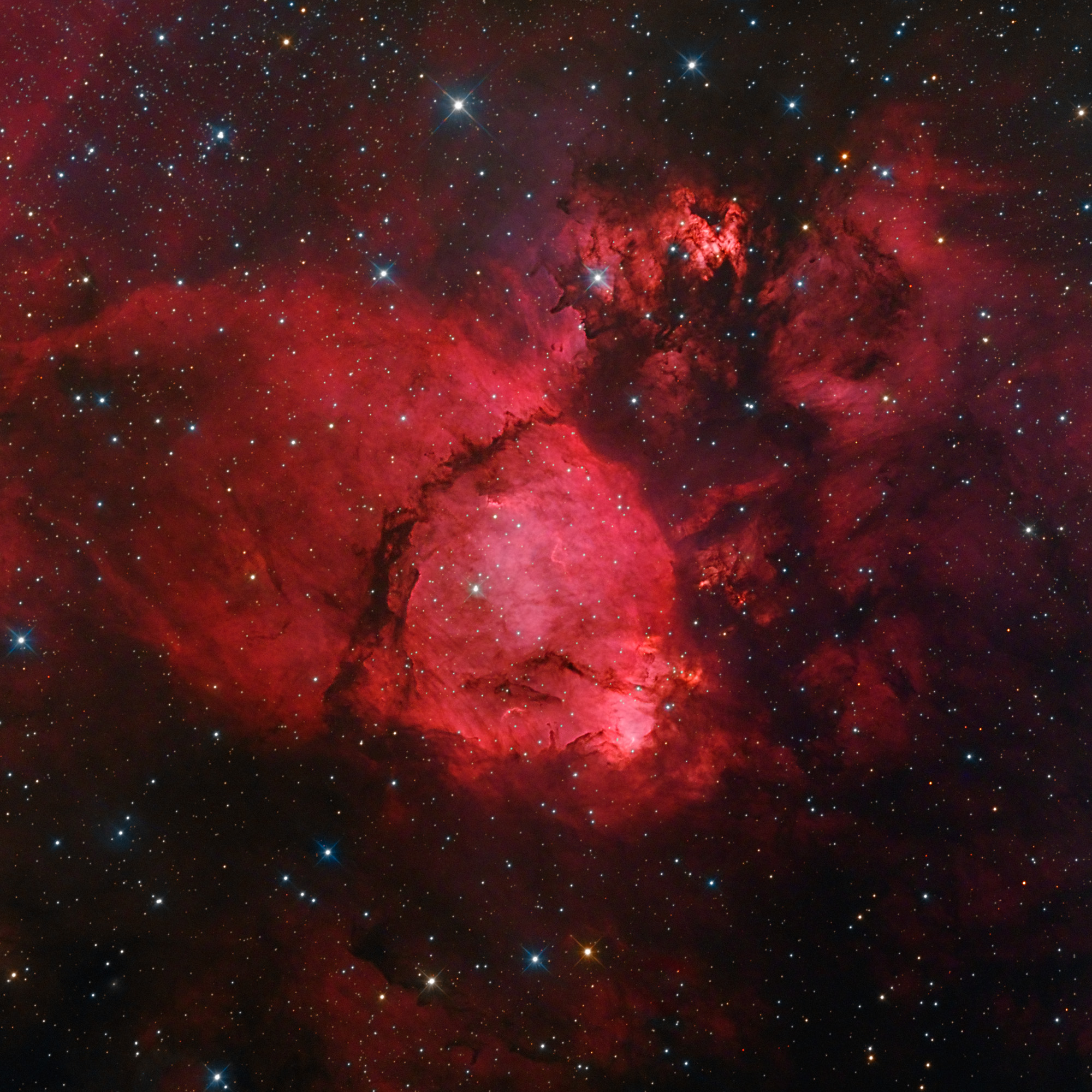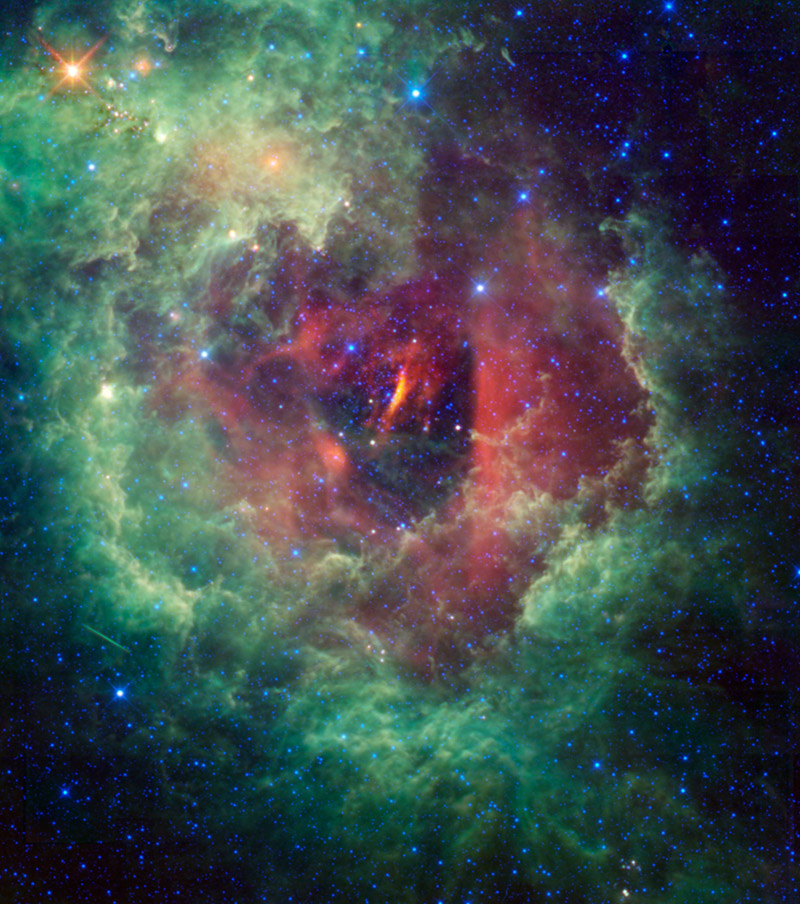Valentine's Day in Space: Cosmic Love Photos
With Love, From Space
Fall in love with space all over again with these romantic images from across the universe.
Astrophotographer Terry Hancock took this image of the Rosette Nebula taken under a full moon from western Michigan on March 16, 2014. [Read the full story.]
The Heart Nebula
This heart-shaped cloud of cosmic gas and dust is called the "Heart Nebula," or IC 1805. It lies about 7,500 light-years from Earth in the constellation Cassiopeia.
A Stellar Proposal
What better place for two space lovers to get engaged than below the Milky Way? In this photo, astrophotographer Sergio Montúfar proposes to his girlfriend, Barby, beneath the Milky Way in Cabo Raso, Argentina on Sept. 27, 2016. (She said yes!)
Pluto's Heart
An image of Pluto, taken by NASA's New Horizons space probe, features the smooth "heart" of the dwarf planet. This region is unofficially known as Sputnik Planum. [Pluto's Heart: A Cosmic Valentine in Photos]
Flower in the Ring Nebula
This flower-shaped cloud of cosmic dust and gas is a shell of material left over from dead, exploded stars. It is known as the Ring Nebula (also Messier Object 57 and NGC 6720), and it exists about 2,000 light-years from Earth in the constellation Lyra.
A Cosmic 'Valentine Rose'
The odd planetary nebula, Sh2-174 is shaped like a rose floating in space. [Read the full story.]
Breaking space news, the latest updates on rocket launches, skywatching events and more!
Black Hole Ring
This image of the two galaxies that form Arp 147 shows a vast cosmic ring of stars (blue) and black holes (pink) as seen by the Chandra X-ray Observatory and Hubble Space Telescope. Another galaxy is also visible (vertical at left), as well as a bright star and quasar (pink object at upper left). This image was released on Feb. 9, 2011. [Read the full story.]
A Broken Heart in Space
NGC 896 Emission Nebula in constellation Cassiopeia is located some 7500 light-years from Earth in the Heart Nebula. A light-year is the distance light travels in one year, or about 6 trillion miles (10 trillion kilometers).
Heart and Soul
The Heart and Soul nebulae are seen in this infrared mosaic from NASA's Wide-field Infrared Survey Explorer, or WISE. The image covers an area of the sky over ten times as wide as the full moon and eight times as high in the constellation Cassiopeia.
Eye-Catching Rosette Nebula
A new image taken by NASA's Wide-field Infrared Survey Explorer (WISE) shows the Rosette nebula located within the constellation Monoceros (the Unicorn). This flower-shaped nebula is a huge star-forming cloud of dust and gas in our Milky Way galaxy, about 4,500-5,000 light-years away.
Heart Nebula Image Terry Hancock
Astrophotographer Terry Hancock captured this image from DownUnder Observatory in Fremont, Michigan on Aug. 29 to 31, 2012. [Read the full story.]

Space.com is the premier source of space exploration, innovation and astronomy news, chronicling (and celebrating) humanity's ongoing expansion across the final frontier. Originally founded in 1999, Space.com is, and always has been, the passion of writers and editors who are space fans and also trained journalists. Our current news team consists of Editor-in-Chief Tariq Malik; Editor Hanneke Weitering, Senior Space Writer Mike Wall; Senior Writer Meghan Bartels; Senior Writer Chelsea Gohd, Senior Writer Tereza Pultarova and Staff Writer Alexander Cox, focusing on e-commerce. Senior Producer Steve Spaleta oversees our space videos, with Diana Whitcroft as our Social Media Editor.











